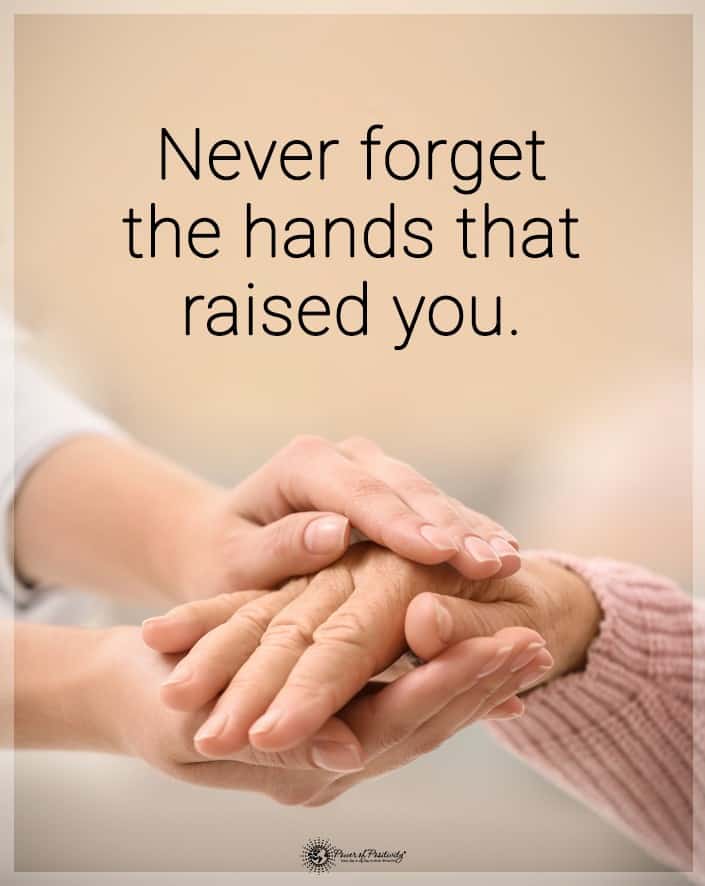Politeness is one of the best qualities that someone can have. Polite people put others at ease, ensure the comfort of others, and makes you look great. It’s a very underrated trait that we need more of today.
But what if you’ve never bothered being polite? It’s not too late to start. Luckily, it’s that something you can learn!
Here Are 10 Things Polite People Do Without Realizing It
1. They Respond Well To Correction and Criticism
It can be unpleasant to be told that you are wrong or to be criticized for something that you think you are doing well. But being wrong and being corrected are a part of life. It’s how we learn and grow – and polite people are very aware of this.
When a polite person is corrected, they respond in a positive way. They become curious about how to improve and may ask questions or request clarification. They will also readily admit their wrongs and will work to correct them. (1)
This is because polite individuals are mature and secure in themselves. They are not afraid of looking “dumb”, and instead, they are open to receiving constructive criticism that helps them to become better.
2. They Choose Their Words Carefully
Polite individuals know that words hold a lot of power. This is why they are always aware of the words they are saying and how they are saying them. Here are some ways to follow in their footsteps:
·They Don’t Overshare
Polite people know that there is wisdom in keeping some things to themselves. They won’t tell their life story to a stranger or tell embarrassing or awkward stories that would make others uncomfortable.
·They Don’t Ask Personal Questions
Even when they are very curious about someone, polite people do their best to be tactful. They know that putting others on the spot by asking overly personal questions can feel violating and uncomfortable.
· They Don’t Bring Up Things From Social Media
In this day and age, it is common for people to overshare. But even if a polite person knows personal details of someone else through social media, they are careful not to bring it up in person – unless that someone brings it up first.
·They Don’t Ignore The Elephant In The Room
It’s hard to know what to say to someone who has lost a loved one, just got divorced, or is going through any kind of rough time. But someone who is polite knows that ignoring this fact altogether is much more awkward than expressing kind condolences or words of support.
3. They Do Not Take Part In Drama
It’s easy to get caught up in all sorts of drama, both on and offline. A polite person has no interest in doing so. They would never dream of spreading half-truths about anyone else, and they do not want to hear about them either.
When they hear any rumors, they instinctively do not believe them. They are not the kind to make any sort of judgment based on speculation or malicious information that doesn’t come straight from the source.
If they are ever asked to pick a side, a polite person will respectfully remain neutral if they don’t have enough factual information to take an informed stance. They do not wish to waste any energy by participating in drama.
4. They Take The First Step
Polite people aren’t interested in playing power games. They don’t try to pull rank or status by expecting others to approach them first. They especially do not try to use that status to take advantage of others.
When introduced to someone new, a polite person will gladly greet them first. They step forward with a smile and speak respectfully to their new acquaintance. Plus, they strive to make others feel honored; they don’t feel the need to be honored.
5. They Communicate In A Positive Way
Someone who is polite knows how to communicate in an effective and positive way. These communication skills will speak volumes of their character and will help them get farther in life. Here are some of the ways that polite people communicate: (2)
· They Use Appropriate Volume
A polite person does not shout in public places and doesn’t speak too quietly to be heard. They know the value of understanding the difference between an indoor and outdoor voice, and what settings are appropriate for each.
·They Never Interrupt
Someone with manners listens closely to what other people are saying, and they do not cut in or interject. This is because they are focusing on understanding the other person, not finding a place to provide their own opinion. They desire smooth conversation, and this is the best way to ensure that.
· They Are Not Passive Aggressive
Polite people say what they mean. If they have a problem with something, they will tactfully say so. Passive aggression is rude and inappropriate, no matter the situation – and it’s a very ineffective way to get your point across.
· They Disagree Respectfully
Being polite doesn’t mean being a doormat. If a polite person doesn’t agree with what is being said, they know how to express that in a kind way. They would never force their opinion on others, and they state their case calmly and with a smile.
·Their Body Language Is Polite, Too
Polite words mean very little if they are accompanied by disrespectful body language. A polite person maintains an open posture, a positive expression, and reasonable eye contact when speaking to others.
6. They Try To Make Others Comfortable
Polite people are great hosts. They are welcoming and know how to make others feel at home. They are also often experts at helping others to feel more at ease, even in the worst of situations.
These individuals have high emotional intelligence and can tell fairly quickly when someone feels uncomfortable. They will then do what they can to alleviate that person’s stress without overstepping boundaries.
7. They Mind Their Manners
In kindergarten, we’re all taught to say “please”, “thank you”, “you’re welcome”, and “good morning”. But many people forget these necessary habits over time and become complacent with them.
Polite people know the value of basic manners and continue to practice them every day. For example, someone who is polite:
- Thanks staff who assist or serve them
- Apologizes for accidentally touching or bumping into someone
- Greets their colleagues every day
- Smiles when they make eye contact with a stranger
- Always says “You’re welcome” when they are thanked
Of course, these are just small examples – there’s a lot of other ways that polite individuals showcase their manners!
8. They Think Kindly Of Others
In this world, it’s easy to be overly critical of other people or judge them based on their mistakes. But a polite individual knows that this is not right. They prefer to practice positive thinking when considering other people. (3)
Essentially, polite people think of others with compassion and kindness. Here are some of the ways that they do so:
· They Treat Everyone The Same
It doesn’t matter if you’re a garbage collector, a construction worker, a doctor, or even a CEO. Someone who is polite will treat all of these individuals the same way. They care not about the status or wealth of others – only that they are treated with basic human respect that everyone deserves.
· They Don’t Wish Harm On Others
A polite person does not want others to suffer. They make peace and forgive those who have wronged them. Sure, in some extreme cases, there are exceptions – but for the most part, polite people do their best to only wish others the best.
· They Do Not Enjoy The Misfortune Of Others
It’s easy to smirk and celebrate internally when someone who is mean to you gets in trouble or makes a mistake. A polite person knows that they have to rise above that. They do not cheer for the downfall of others.
·They Never Act Superior
No matter how rich, powerful, or famous a polite person becomes, they will never use that against others. They will not get on a high horse and act like others are beneath them. They seek to treat everyone equally, no matter what.
· They Simply Don’t Judge
A polite person understands that they cannot possibly know someone’s entire story based on small bits of information. As such, they don’t judge others for what they do. They don’t go by first impressions and they think the best of others without being naïve.
9. They Listen Well
Polite people aren’t just good listeners – they’re active listeners. They don’t just quietly listen, they focus, give it all their attention, and act interested. They seek to understand what the other person is saying, often asking questions or making small, acknowledging remarks to indicate their engagement.
In addition, if they are in a situation where they’ve been talking about themselves a lot, they will direct the conversation to someone else. They may ask a question or request their opinion, or bring up a topic that they know someone within the discussion is interested in.
10. They Respect Boundaries
Due to their high emotional intelligence, polite people are able to do their best to keep everyone comfortable. This means being able to respect boundaries and back away once they get any sign that they have overstepped. Here are some ways they respect boundaries:
- Staying outside of someone’s personal space
- Never touching someone unless they are touched first, or if it has been indicated that they can
- Calling someone by their chosen name with accurate pronunciation (as much as they can)
- In addition, if someone says they are uncomfortable with something, a polite person steps back and does what they can to accommodate that. They never:
- Tell the other person to stop being sensitive
- Insist that the other person needs to learn more positive thinking
- Make excuses or justify why they should be able to continue
Polite people also respect their own boundaries. They are capable of kindly but firmly reinforcing their personal boundaries to others without making the situation awkward. After all, you have to respect yourself, too – not just others!
Final Thoughts On Some Things Polite People Do Without Realizing It
Being polite comes with a whole host of great benefits. You make yourself and others feel great. You present yourself attractively. You’ll be happier and be surrounded by polite people.
If you’ve been looking for a reason to up your politeness game, take this as a sign to go for it! By incorporating these 10 things polite people do without realizing it, you’ll be taking those much-needed first steps with ease.













